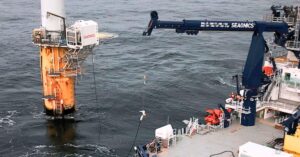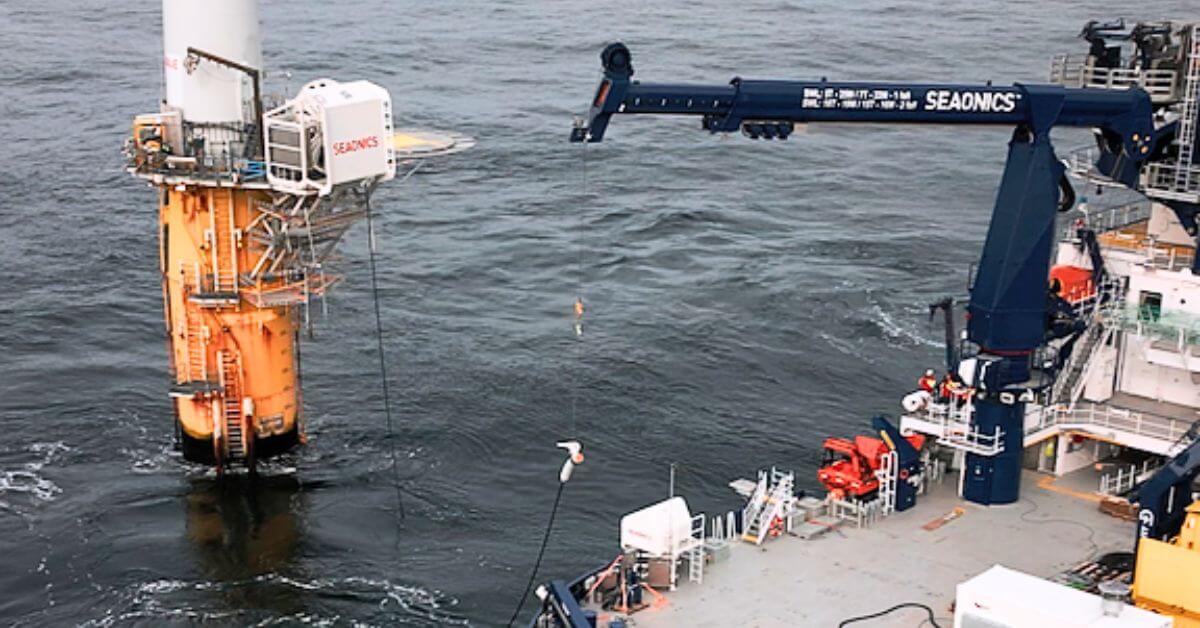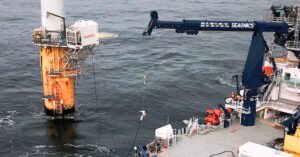
U.S. & U.K. Sanction 5 Russian Cargo Ships For Transporting Military Supplies From Iran To Russia
September 11, 2024
Maersk Tankers To Launch New Chemical Tanker Pool To Maximize Partner Results
September 12, 2024

Seaonics, a Norwegian lifting and handling company, has successfully tested its innovative Ocean Charger system on an electric service operation vessel (SOV).
The tests were carried out using Rem Offshore’s diesel-electric hybrid construction SOV, REM Power. High-voltage charging tests were conducted at port and offshore, using a charging point installed on a wind turbine. The system, which uses an 11-kilovolt (KV) current to deliver 6 megawatts (MW) of charge, proved that the Ocean Charger can be installed on existing turbines and charge an SOV from day one, including one of the smallest offshore turbines, according to Seaonics.
Seaonics’ Sales Manager for Offshore Energy, Bjørnar Huse, claims the company is the first to provide this solution. However, Huse stated that the commercial version of the Ocean Charger would need to be customized for each project due to the different electrical currents between wind farms and turbines.
Connecting vessels to a wind farm’s power grid allows them to charge batteries regularly, improving sustainability by reducing the need to return to port. Huse explained that electric SOVs have lower operating costs than diesel or alternative fuel vessels since they use less energy and require less engine maintenance.
A large 60-person SOV consumes 20 to 25 megawatt-hours (MWh) per day, and with a charging rate of 6 MW, a vessel may be fully charged for a day’s operation in three to four hours. Huse stated that to extend the battery’s lifespan, it is best to keep the charge between 50% and 80%, with a combination of nighttime and ad-hoc daytime charging.
Wind farm owners are moving away from the installation of charging points on substations or floating buoys due to cost and logistical issues. The preferable option is to place charging stations on wind turbines. This technique provides for several charging locations throughout a wind farm, reducing the distance that vessels have to travel to charge. Turbines are usually managed by developers, making it easier to install as many points as needed.
The Ocean Charger uses an industry-standard connector plug, which is already used for shore-charging cruise ships and hybrid-electric newbuild car carriers. Huse claimed that by using existing technology, Seaonics was able to bring a prototype to market instantly without the need to develop new components.
The system is designed to work with a variety of vessel structures and power integration systems. Handling medium-to-high voltage currents onboard vessels, and also adhering to international regulations for maritime technical equipment, were major challenges.
Seaonics has been involved in discussions with wind farm operators to determine the most effective charging current. While wind farms use high voltages of 66 or 132 KV, a more cost-effective solution could be to continue operating with 11 KV, which is already used in some offshore vessels.
Reference: Ajot, OEDigital
Seaonics To Commercialize Its Ocean Charger Solution After Successful Testing On Electric SOV appeared first on Marine Insight – The Maritime Industry Guide
Source: Maritime Shipping News


